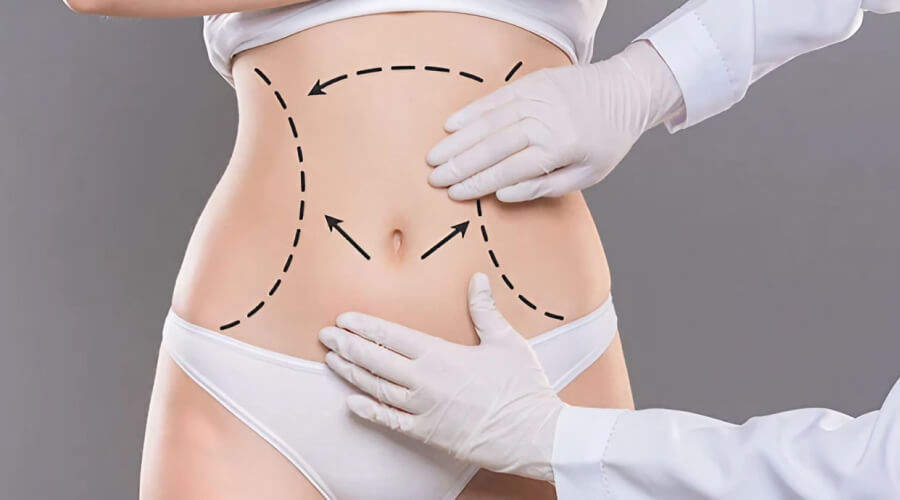Liposuction surgery traditionally involved manual fat removal techniques that relied heavily on the surgeon’s skill. However, the rise of robotics and artificial intelligence (AI) is revolutionising the field, potentially making liposuction more precise, efficient, and accessible. In this article, we’ll explore how these technologies are transforming modern liposuction, enhancing both the patient experience and the results1https://www.plasticsurgery.org/news/articles/the-future-of-plastic-surgery-how-artificial-intelligence-is-revolutionizing-aspects-of-the-specialty.
Robotics in Liposuction
Better Precision & Control
Robotic systems have revolutionised a range of surgical procedures by adding an extra level of precision and control2https://www.pwc.com/gx/en/industries/healthcare/publications/ai-robotics-new-health/transforming-healthcare.html. These advanced machines can perform fine movements with a high level of precision. For liposuction surgery, this may help ensure fat removal is even and accurate, potentially leading to better results.
Another significant benefit of robotics in liposuction is their ability to perform minimally invasive procedures. The robots can work through smaller incisions, potentially resulting in less trauma to the surrounding tissues. This means possibly reduced scarring and a shorter recovery time, allowing patients to get back to their daily activities much quicker.
Additional Technology
The use of 3D mapping and imaging technology with robotic systems takes the precision of liposuction to the next level. Before the surgery, surgeons create detailed 3D images of the patient’s body to plan where to remove fat. This means that the procedure is customised to the patient’s unique anatomy and goals.
During the surgery, these 3D images guide the robotic arms, providing the surgeon with real-time feedback and a clear view of what’s happening inside the body. This advanced imaging combined with robotic precision allows for targeted fat removal while preserving important structures, making the surgery potentially safer and more effective.
Benefits of Robotics in Liposuction
- Enhanced Precision: Robots can make very fine adjustments, potentially leading to more accurate fat removal and smoother results.
- Steady Movements: Robotic arms move consistently and steadily, reducing the chance of uneven results.
- Minimally Invasive: Smaller cuts mean less damage to tissues, resulting in less scarring and faster recovery.
- Advanced Planning: 3D mapping and imaging help surgeons plan in detail and provide real-time guidance during surgery.
- Improved Safety: The precise and real-time feedback from robotic systems lowers the risk of complications, making the procedure safer.
AI in Liposuction
Preoperative Planning
Artificial intelligence (AI) has transformed how surgeons plan for liposuction. By analysing a patient’s body composition in detail, AI algorithms can create personalised treatment plans. This means the system looks at things like fat distribution, skin elasticity, and muscle tone to give the surgeon a clear roadmap of where to remove fat. It ensures that each plan is tailored specifically to the patient’s unique body, potentially leading to more precise and satisfying results.
Real-Time Feedback
AI can provide real-time data and feedback3https://www.ncbi.nlm.nih.gov/pmc/articles/PMC11083167/ as it continuously monitors the patient’s vital signs. If something isn’t going as planned, the AI alerts the surgeon right away, allowing for immediate adjustments. This real-time monitoring can enhance the safety and effectiveness of the surgery, potentially reducing the risk of complications and ensuring better outcomes.
Postoperative Analysis
AI also plays a crucial role in the recovery process. By tracking how the patient heals, AI can spot patterns and predict potential issues before they become serious problems. This continuous monitoring ensures that any complications are addressed quickly, leading to a smoother and faster recovery. Plus, the data collected helps refine future treatment plans, potentially making liposuction even more effective over time.
Benefits of AI in Liposuction
- Personalised Treatment: AI can create custom plans based on each patient’s unique body, ensuring the treatment fits their needs.
- Real-Time Monitoring: AI provides continuous feedback during surgery, improving precision and safety by allowing quick adjustments.
- Enhanced Recovery: AI helps monitor the recovery process, quickly identifying and addressing potential issues for a smoother recovery
Risks of Robotics & AI in Liposuction
Technical Failures
One of the main risks of using robots and AI in liposuction is the possibility of technical problems. These could be software bugs, hardware breakdowns, or connectivity issues, which might interrupt the procedure and cause complications. While these systems are generally dependable, any glitch during surgery could be dangerous for the patient.
Learning Curve for Surgeons
Even though robotics and AI can improve precision, surgeons need time to become skilled with these new technologies. Initially, this can make surgeries take longer and increase the chance of mistakes as surgeons get used to the new systems.
Dependence on Technology
Relying too much on robotic and AI systems could lead to a decrease in a surgeon’s hands-on skills and decision-making abilities. If the technology fails or encounters a problem it can’t solve, the surgeon must be able to take over effectively, which might be difficult without regular practice of manual techniques.
High Costs
Using robotics and AI in liposuction is expensive. The equipment and maintenance costs are high, which can make the procedures more costly for patients and limit access to those who can afford the higher prices.
Limited Availability
Not all medical facilities can afford the latest robotic and AI technologies due to their high costs. This can create differences in the quality of care available to patients in different areas or financial situations.
Data Privacy Concerns
AI in medical procedures involves collecting and analysing a lot of patient data. Protecting this data is crucial. Any breach could lead to serious ethical and legal problems, as well as a loss of patient trust.
Understanding AI Decisions
Sometimes, AI makes decisions based on patterns that aren’t clear to human surgeons. This “black box” aspect of AI can be problematic if a surgeon can’t fully understand or explain the AI’s recommendations, potentially leading to mistrust or misuse of its guidance.
Over-Automation
There’s a risk that too much automation could make surgeons too passive during procedures, relying too heavily on AI and robotic systems. This could reduce the surgeon’s active involvement and critical thinking during surgery, which are essential for handling unexpected issues.
The Future of Robotics & AI in Liposuction
Nanotechnology
In the future, we might see nanobots used in liposuction. These tiny robots could navigate through your body with incredible precision to target and break down fat cells. This means the procedure could be even less invasive, causing less pain and allowing for quicker recovery.
Biofeedback Systems
Advanced biofeedback systems could become a staple in liposuction. These systems would provide real-time data on a patient’s condition during surgery. For example, they could monitor vital signs and tissue responses, helping the surgeon make instant adjustments to improve safety and results. This means the procedure would be even more precise and tailored to your body’s needs.
Regenerative Medicine
Using stem cell therapy, doctors could enhance the healing process and improve the firmness of your skin after fat removal. This means not only removing fat but also rejuvenating your skin.
Predictive AI Models
AI could develop models that predict how your body will respond to liposuction. By analysing detailed data about your body, these AI models could help plan the best surgical approach for you. This means more customised and effective treatments, with AI guiding the procedure to ensure the best possible outcome.
Enhanced Postoperative Care
After surgery, AI could play a big role in monitoring your recovery. With sensors and other devices, AI could track your healing process in real-time, providing personalised advice and alerting doctors to any potential issues. This means a smoother recovery and less worry about complications, as the AI would help ensure you get the care you need when you need it.
FAQs
How common is the use of robotics and AI in liposuction today?
The use of robotics and AI in liposuction is still new. Many advanced cosmetic surgery clinics are starting to use these technologies because they potentially offer better precision, safety, and outcomes. However, how widely available these technologies are can depend on where you live and the specific clinic you visit.
Will the surgeon still be in control during a robotic-assisted liposuction procedure?
Yes, the surgeon is always in control. During a robotic-assisted liposuction procedure, the robotic systems help the surgeon by providing enhanced precision and real-time feedback, but they don’t operate on their own. The surgeon makes all the decisions and directs the robot throughout the procedure.
Are there any specific qualifications surgeons need to perform robotic-assisted liposuction?
Yes, surgeons need special training to use robotic systems and AI tools effectively. This training helps them handle the technology safely and make the most of its benefits for patients. Many medical institutions offer courses and certifications to help surgeons become skilled in robotic-assisted procedures.
Can robotic and AI technologies be used for all types of liposuction procedures?
Robotic and AI technologies are very versatile, but they might not be suitable for every type of liposuction procedure. Whether these technologies are used depends on the patient’s specific needs, the area being treated, and the surgeon’s expertise. For example, they can be especially helpful for treating smaller or more delicate areas, like chin liposuction, for example.

